“Through the brightness before him were coals of fire kindled.”
2 Samuel 22:13 (KJV)
“The stomach of industry thrives on coal; it will not eat anything else. Industry is a carbonivorous animal.”
Jules Verne (Topsy Turvy 1898)
Discover the purpose of your work and your corporation
What is your purpose in work?
• To transform the Borneo metallurgical coal mining industry by introducing cutting-edge standards and modern technology, thereby eradicating illegal mining practices and halting the environmental degradation in the region.
• To make strategic investments that not only create fresh employment opportunities but also elevate the social and economic well-being of the local community.
What drives your corporation’s core value?
• To capture the exciting opportunity to invest in the burgeoning market while actively contributing to the adoption of sustainable practices within the local mining sector.
• To diversify your company’s portfolio and establish a strong presence in the Asia Pacific region.
This mission is designed to harmonize with your overarching objectives and your corporation’s visionary outlook.
World Coal Map 2019
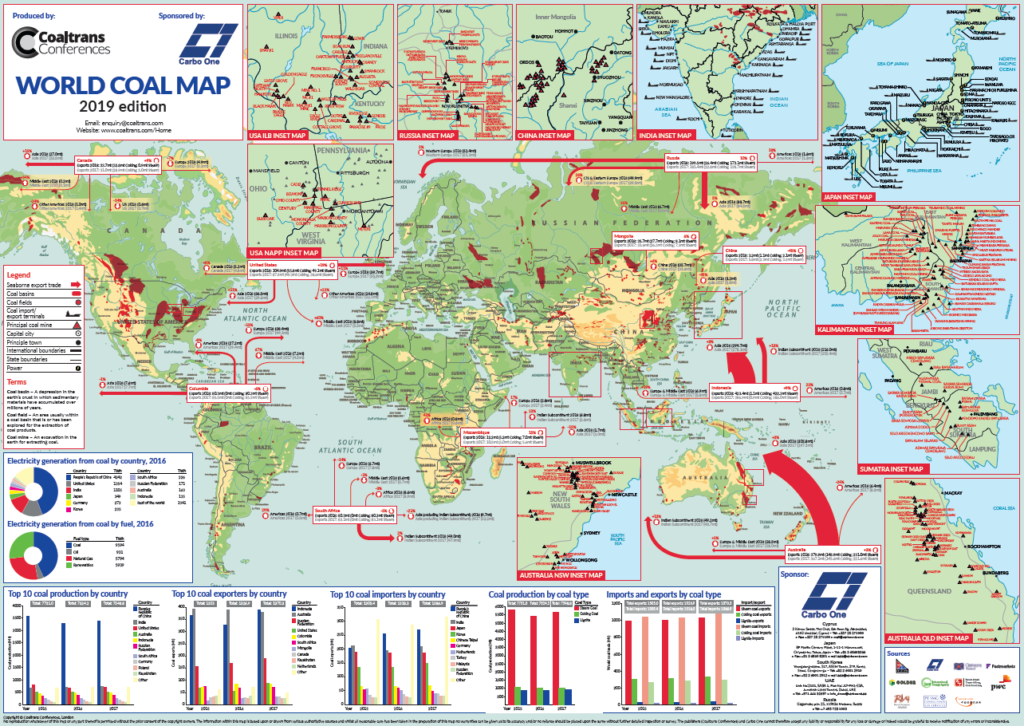
1.0 Executive Summary
Mission
- Entity: Forge strategic alliances with foreign investors, global coal mining conglomerates, and target market consumers to facilitate investments in metallurgical coal mining operations.
- Stage 1: Identify a metallurgical coal mine with total resources exceeding 200 million tonnes and a target production capacity of 10 million tonnes per annum.
Key Management Team
- Mentors: Visionary industry leaders with vast global networks, offering invaluable guidance and inspiration.
- Coaches: Mission-focused industry experts providing practical solutions to keep the team on track.
- Partners:
- A project leadership group with a proven track record in the development, operation, and financial management of metallurgical coal mining ventures.
- A reputable investment management firm with access to funding sources within the metallurgical coal mining sector.
- Government agencies offering financial incentives and robust business support.
- A credible local metallurgical coal mine developer with procurement capabilities, a local network, strong financial standing, and solid government backing.
- Target market end-users, including coal traders and steelmakers.
Product Benefits
- Price: Coal serves as a cost-effective and competitively priced energy source.
- Energy: Coal is easily combustible and produces high energy output.
- Access: Borneo offers convenient access to coal resources, located close to end-user nations.
- Uses: Coal finds extensive application in electricity generation, steel production, cement manufacturing, and aluminium industries. It accounts for 37% of global electricity and over 70% of world steel production.
Target Market
- Customers: Large steel manufacturers in China, India, Japan, Korea, and the European Union.
Financial Projections
- Initial capital requirement: 10 million tonnes per annum X US$160 per tonne = US$1.6 billion.
- Operational cost: 10 million tonnes per annum X US$100 per tonne = US$1.0 billion/year.
- Projected revenue: 10 million tonnes per annum X US$170 per tonne = US$1.7 billion/year.
- Annual income: US$1.7 billion – US$1.0 billion = US$0.7 billion/year.
- Payback: Anticipated payback period within 3 years (from achieving a production capacity of 10 million tonnes per annum).

Unique Business Model
- Team: Comprising a top-tier international management team with a track record of success.
- Partnership: Merging the distinctive strengths of stakeholders and investors into a single entity.
- Financial Backing: Supported by substantial financial resources.
- Demand: Establishing strategic partnerships with target customers to secure consistent demand.
- Location: Benefit from proximity to seaports in Borneo, strategically positioned near international shipping lanes.
- Resources: Metallurgical coals are in high demand within the steel industry, ensuring a robust market presence.
2.0 Mission
2.1 Problem
- Issues: Borneo grapples with environmental, technological, and unsustainable mining challenges.
- Explore: Outdated mineral policies and an unfavourable investment climate hinder coal mining exploration in Borneo.
2.2 Solution
- Standard: Implement rigorous policies to align all current and future mining licenses with international benchmarks.
- Incentive: Offer fiscal incentives to attract foreign, long-term investments in exploration and new metallurgy mine development.
- Partner: Forge joint venture partnerships with strategic investors from end-user nations requiring metallurgical coals for their steel production.
2.3 Mission
- Entity: Establish strategic alliances with foreign investors, global coal mining groups, and target market consumers to invest in metallurgical coal mining operations.
- Stage 1: Focus on targeting metallurgical coal mines with total resources exceeding 200 million tonnes and aim for a production capacity of 10 million tonnes per annum.
3.0 Product
3.1 Product Description
- Coal comes in four primary types: anthracite (86-98% carbon), bituminous (69-86% carbon), subbituminous (higher water content), and lignite (up to 70% water). Anthracite boasts the highest quality, highest calorific content, and fewest impurities. Bituminous and sub-bituminous coal serve in thermal and metallurgical roles. Our focus is on metallurgical coal for steel production.
- Coal extraction involves surface or underground operations to extract coal from the earth.
Formation of coal Types of coals and their uses
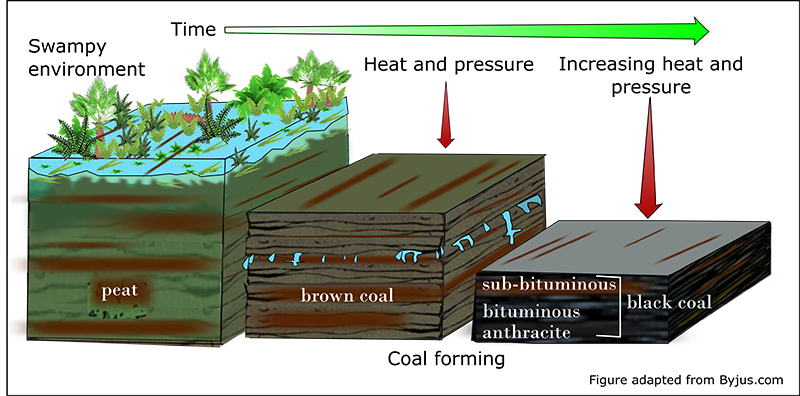
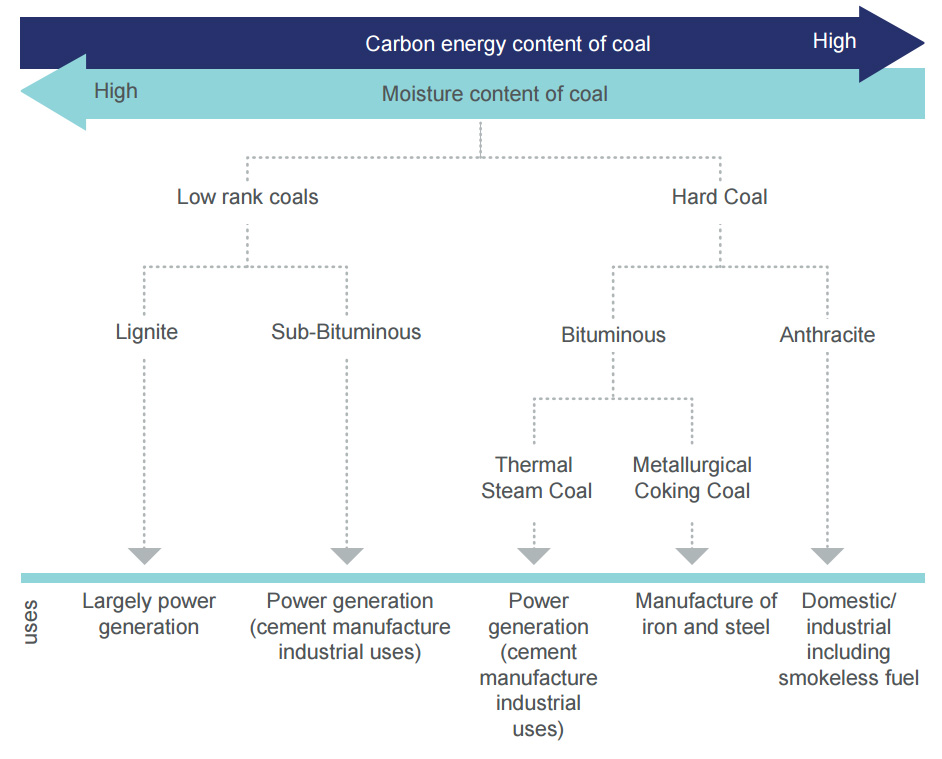
3.2 Product Attributes
Metallurgical coal mining comprises five stages:
- Exploration: Geologists map, sample, and analyse mineral deposits to determine reserves.
- Planning: Mine design based on financial, safety, social, environmental, and operational factors.
- Infrastructure: Includes facilities, machinery, transport, and housing.
- Production: Involves extraction, crushing, smelting, and molding.
- Reclamation: Site closure and restoration for various uses.

Metallurgical coal attributes
Mining phases
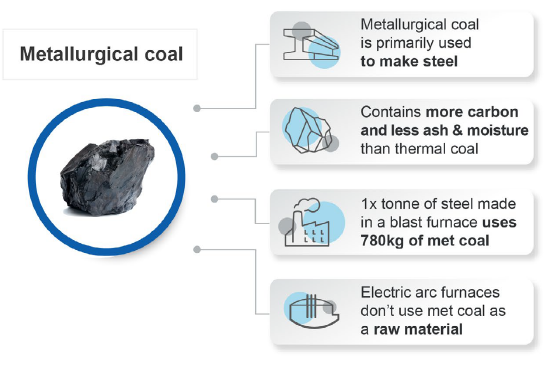
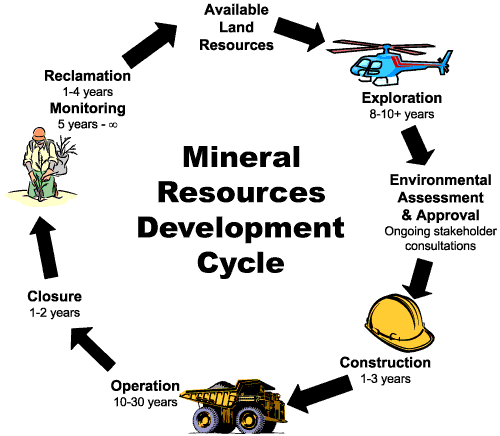
Source: Industry Australia 2020
Source: CA Mining. Zoe Mandalios, 2013
3.3 Product Benefits
- Price: Competitive and stable energy source.
- Energy: High-energy combustion.
- Access: Proximity to Borneo and end-user nations.
- Uses: Vital for electricity, steel, cement, and aluminum industries; coal powers 37% of global electricity and over 70% of steel production.
Metallurgical coals in the steel industry
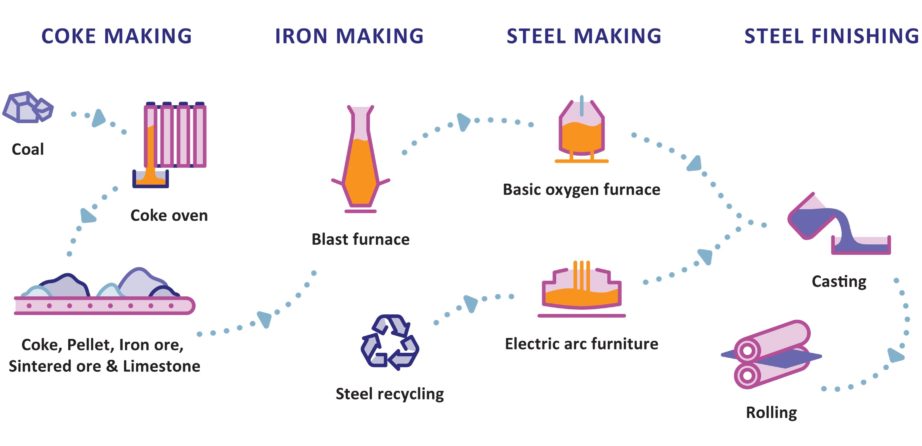
3.4 Product Competitive Advantages
- Team: Partnered with top coal mining industry specialists.
- Demand: Secure demand from target market nations.
- Standard: Advanced mining technology increases productivity and safety, potentially improving margins by 20%.
- License: Granting licenses and permits to international mining operators reduces illegal mining.
4.0 Market
4.1 Market Segment
- Borneo holds approximately 28.34 billion metric tons of coal reserves, with the potential for further growth through new explorations.
- Indonesia boasts 37.5 billion metric tons of coal reserves, with Kalimantan accounting for 65% of these reserves.
- Malaysia’s coal reserve is 1.94 billion metric tons, primarily concentrated in Borneo, with Sarawak holding 80% (1.55 billion metric tons) and Sabah 19% (0.37 billion metric tons). Some reserves are located in environmentally sensitive sites, including Maliau Basin and Danum Valley.
- Brunei had the Brooketon Colliery coal mine, which ceased operations in 1924. There are currently no plans for coal resource development in the country, given its abundant oil and gas resources.
Kalimantan coalmines
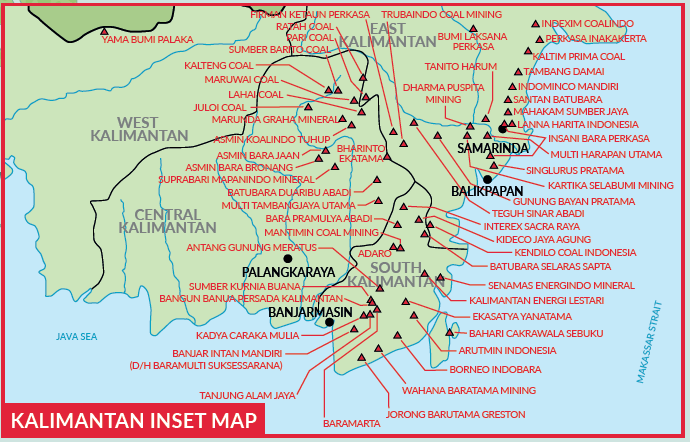
Coal deposits In Sabah and Sarawak
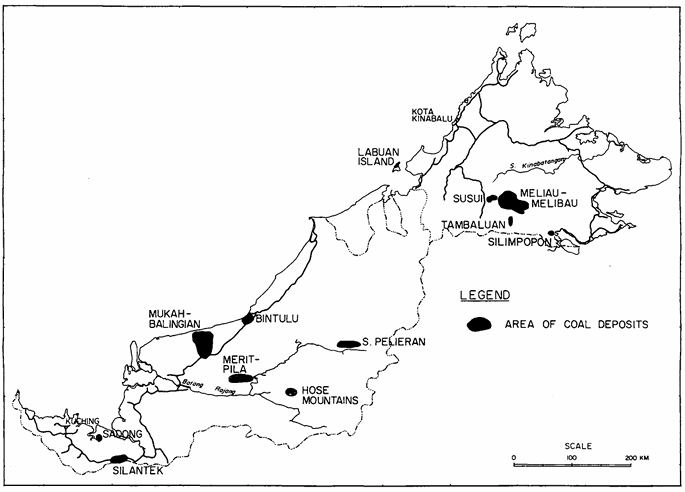
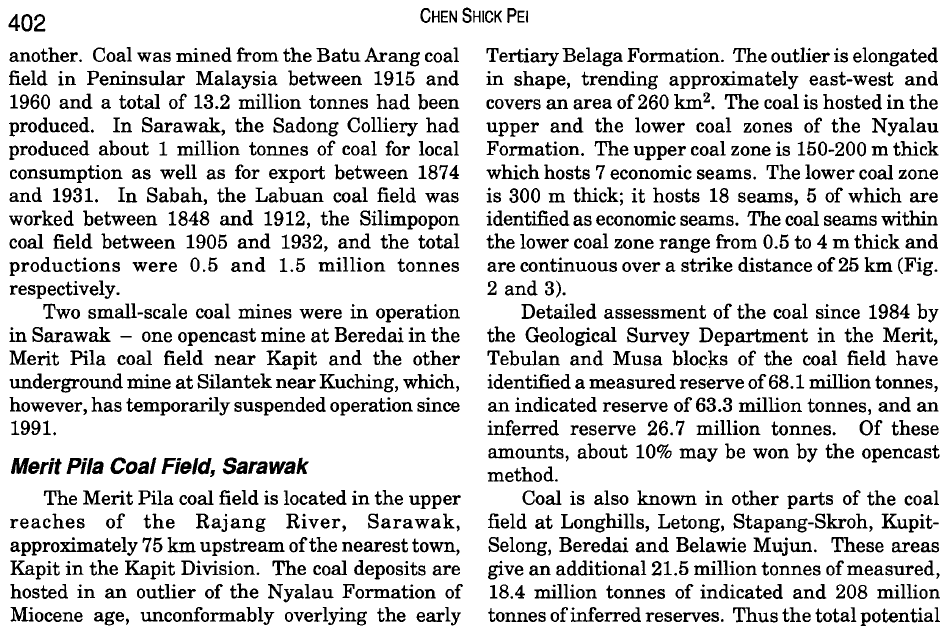
In 1905, Cowie Harbour Coal Company Limited established the Silimpopon Coal Mine in North Borneo. Peak production reached 90,000 tons in 1924. The mining operation ceased in 1932. Total production was 1.5 million tonnes.
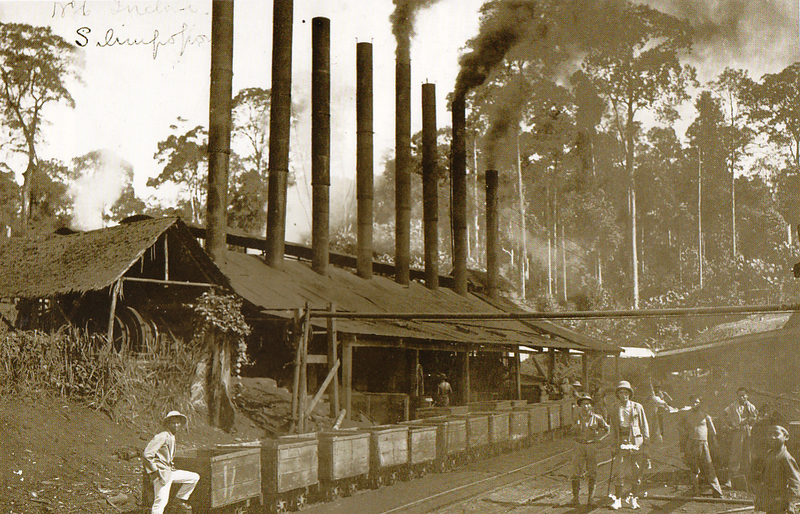

Images source: Wikipedia 2011/ Kamiie / Ibbotson
Sabah Meliau and Melibau basins–BHP discovered several high-quality coal deposits in 1991. The coal reserves were estimated to be 100 million tons of good quality bituminous coal, with low sulphur contents and high heating values. The total reserve is about 200 million tonnes.
Sarawak Merit Pila Coal Mine–170.3 mt proven reserves


Source: Docplayer. P. Osvald and I. Sýkorová 2006
Sarawak Merit Pila Coalfield’s total potential is 400 million tonnes. Attributes of the coal – very low sulphur, moderate to high volatiles, moderate moisture, average calorific value, subbituminous coal and ash content of some seams are less than 5%.
Sarawak Mukah-Balingian coalfield potential reserved is 270 million tonnes. The coal has low ash, low sulphur and moderate to high moisture contents. The calorific value on an air-dried basis is 4,400 kcal/kg.
4.2 Target Market Segment Strategy
- Adopt a Public-Private Partnership (PPP) model that aligns the goals of end-user nations, foreign funds, government mining agencies, and global coal mining specialists.
- Focus on coal extraction from Kalimantan coal mines and conduct exploration for additional coal reserves.
- Key strategic plans include obtaining operational licenses, ensuring procurement transparency, implementing new mining techniques, adopting innovative management practices, achieving productivity growth, and maintaining stable financial performance.
- Implement training programs to enhance miners’ skills and competencies in using new equipment, advanced technology, and modern mining methods to establish industry best practices.
- Develop a stable, long-term financial returns collaboration strategy to mitigate the impact of volatile commodity pricing in the global market, providing incentives for investors to expand from exploration to comprehensive reclamation programs.
4.3 Market Needs
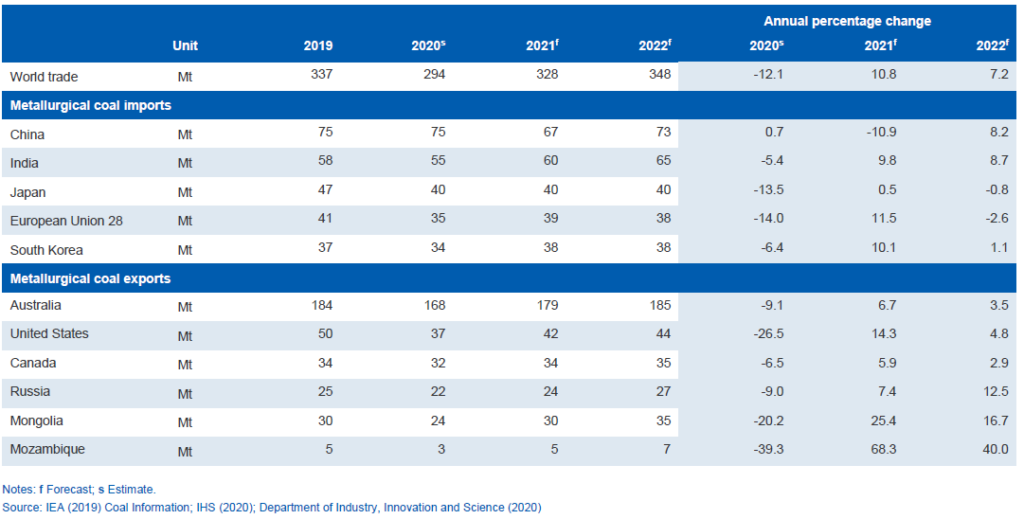
4.4 Growth Drivers
1. Global seaborne metallurgical coal import demand

2. Global seaborne metallurgical coal export supply

4.5 Key Customers
- Major importers of metallurgical coal include China, Japan, South Korea, India, and the European Union, with a total demand of 217.76 million tonnes of coking coal in 2020.
- China: 72.28 million tonnes
- Japan: 51.90 million tonnes
- India: 51.85 million tonnes
- European Union: 30.20 million tonnes
- South Korea: 11.53 million tonnes

Top steelmakers in 2020:
- China Baowu Group
- ArcelorMittal
- HBIS Group
- Shagang Group
- Nippon Steel Corporation

4.6 Competition and Industry
Metallurgical coal trade map 2020
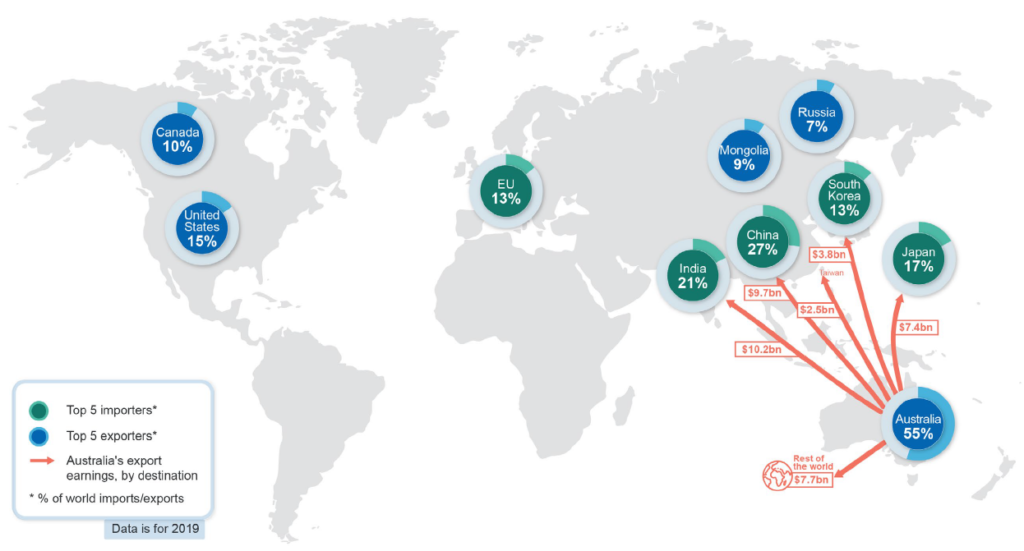
Indonesia Key Players
- Adaro Energy
- Arutmin
- Banpu
- Bayan Resources
- Berau Coal
- Bumi Resources
- Delta Dunia Makmur
- Geo Energy Resources
- Golden Energy Mines Group
- Harum
- Indika Energy
- Intitirta Primasakti
- ITMG (Indo Tambangraya Megah)
- Kaltim Prima Coal
- Kideco Jaya Agung
- PTBA (Bukit Asam)
- Straits Asia Resources
- Toba Bara
- And over 90 other coal producer companies.
Metallurgical Coal Mines in Indonesia
Key operators in metallurgical coal mining in Indonesia include:
- Adaro Energy
- Asmin Koalindo Tuhup
- Cokal – BBM (BBM: Bumi Barito Mineral)
- Kideco
- Marunda Graha Mineral
- Tambang Benua Alam Raya
- MGM (Maruwai Coal)
- AKT (Anugerah Karya Persada)
In 2019, MGM and AKT collectively produced approximately four million tons of coking coal. There is significant untapped potential, with estimates suggesting that the region could potentially hold up to 10 billion tons of coking coal.
Top 10 coal producers in Indonesia
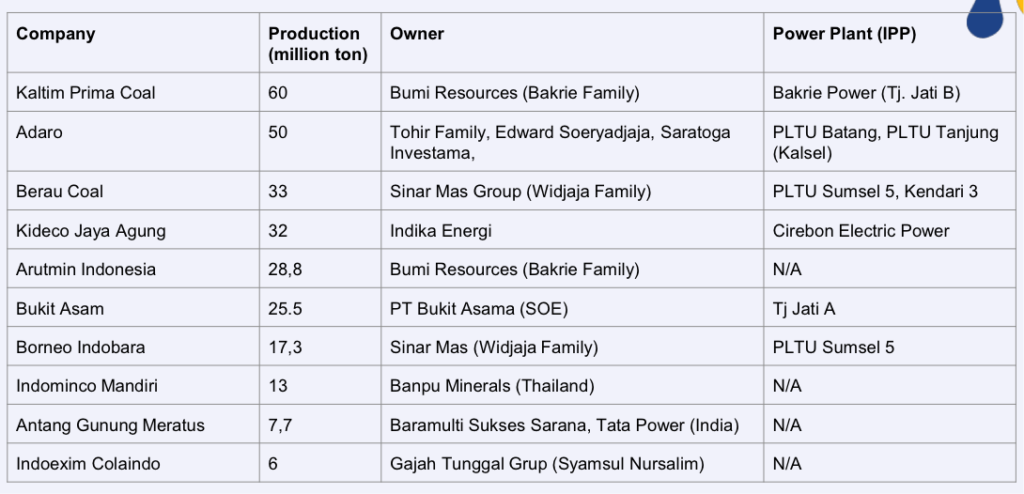
Largest coal mines in Indonesia
Mine Owner Location Production in 2020
Sangatta Mine Bumi Resources East Kalimantan 51.72 mtpa
Tutupan Mine Adaro Energy South Kalimantan 38.66 mtpa
Pasir Mine Indika Energy East Kalimantan 26.85 mtpa
FTB Project Bayan Resources East Kalimantan 24.40 mtpa
Indominco-Mandiri Mine Banpu East Kalimantan 12.81 mtpa
Source: Mining Technology Carmen 2021
Sarawak: Global Minerals Sarawak S/B
Top International Coal Mine Players
- Anglo American
- Arch Coal
- BHP Billiton (now BHP)
- CEZ Group
- Coal India
- Coronado Global Resources
- Glencore
- NTPC (National Thermal Power Corporation, India)
- Rio Tinto
- Sasol
- Shaanxi Coal and Chemical Industry
- Shenhua Group
- Teck Resources
- Whitehaven Coal
- Yancoal
5.0 Operation
5.1 Coal mining methods
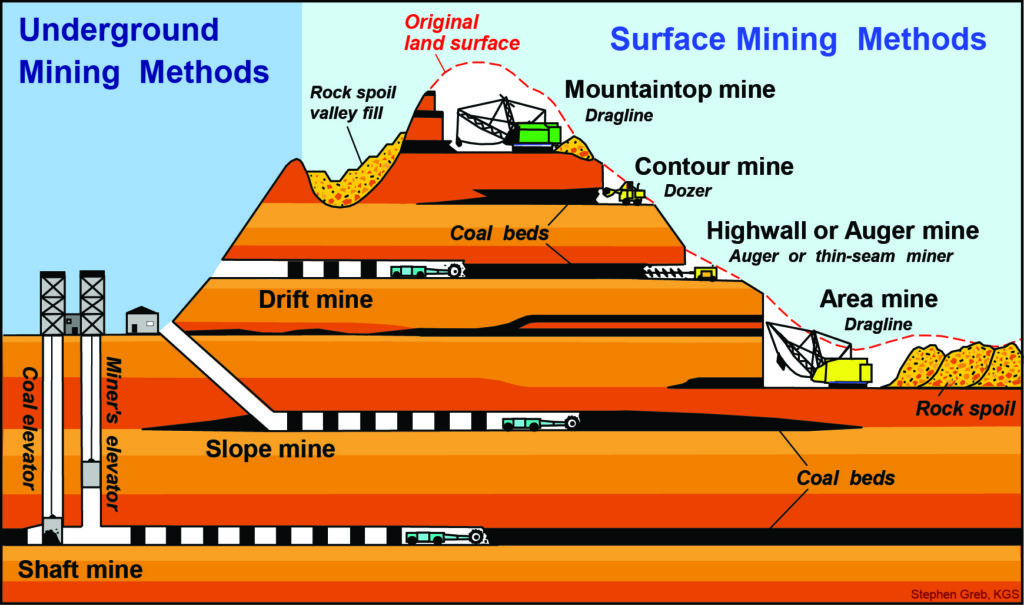
5.2 Surface mining – Strip-mining

Surface mining – Open Pit mining
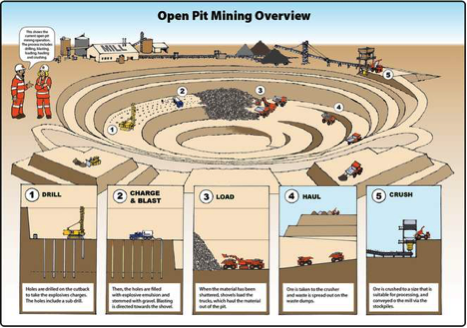
5.3 Underground mining
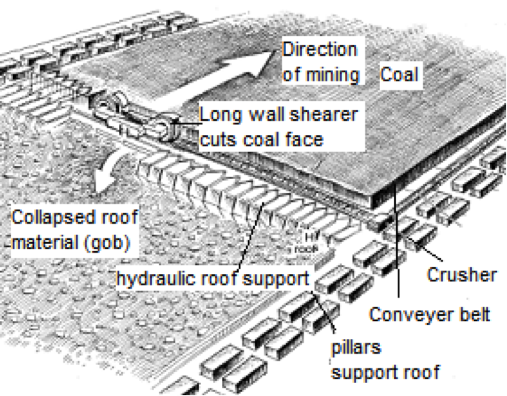
Source: Minerals Ed 2022
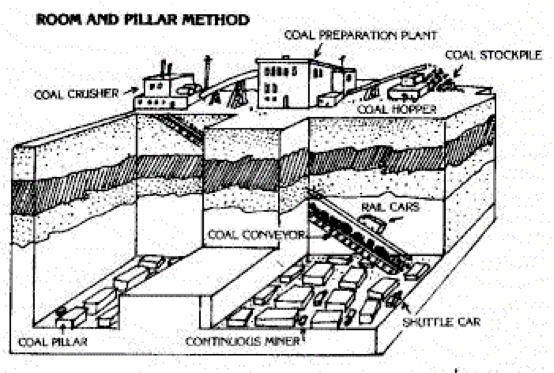
Source: Coal Education
5.4 Coal mining operation

5.5 Indonesia coal mining business processes
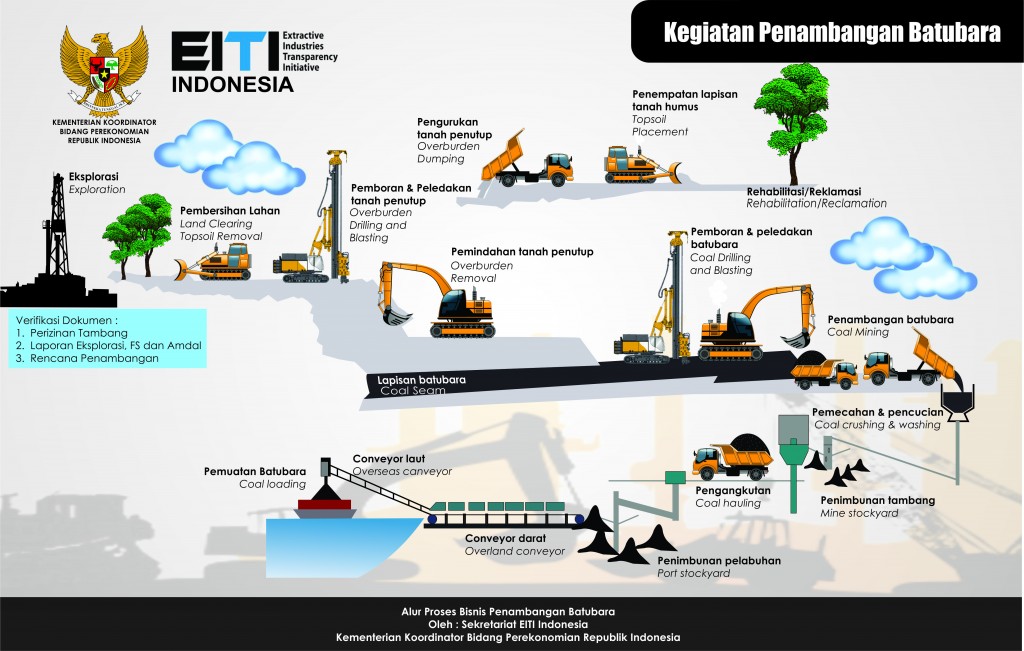
6.0 Financial Implications
6.1 Investment Segment
- Location: The primary investment focus will be on the Kalimantan and Sarawak regions in Borneo.
- Investment Types: Investments include both surface and underground mines. Here are some capital expenditure (Capex) examples from international and Indonesian coal mining projects:
Proposed Capital Investment for Open Cut Mine (Borneo):
- Saleable Metallurgical Coal Reserve: 200 million metric tons
- Saleable Coal Production: 10 million metric tons per annum
- Mine Life: 20 years
- Start-up Capital: US$1.6 billion
Case Study 1: Telkwa Metallurgy Open Pit Mine, Canada (2020):
- Saleable Coal Reserves: 16.55 million metric tons
- Saleable Coal Production: 0.75 million metric tons per annum
- Mine Life: 22 years
- FOB (Free on Board) Cash Cost: US$45 per metric ton
- FOB Price: US$114 per metric ton
- Start-up Capital: US$55 million (excluding working capital)
- Internal Rate of Return (IRR): 57%
- Capital Payback: 2.5 years (after production commencement)
Case Study 2: Hume Underground Coal Mine Feasibility Study, Australia (2016):
- ROM (Run of Mine): 50 million metric tons
- Saleable Coal: 39 million metric tons (assumed yield 78%)
- Production: 2 million metric tons per annum
- Mine Life: 19 years
- Start-up Capital: US$542 million (including rail project)
- Contingency (10%): US$54.2 million
- Exploration/Administration: US$60.2 million
- Property Purchase: US$30.1 million
- Rehabilitation Bond: US$22.5 million
- Initial Capital Investment: US$709 million
- Sustaining Capex: US$255 million (US$11.3 million per year)
- Total Capital Investment: US$964 million (over the project’s life)
- Total Product Cost: US$97.84 per metric ton (FOB US$59.46 production + other costs)
- Average Sales Price: US$84 per metric ton (20% thermal coal at US$60/ton & 80% hard coking coal at US$90/ton)
Comparison of Capital Cost:
- Anglo-American Mines: US$1 billion, 10.2 million metric tons per annum, US$100/ton of capacity
- Hume Coal’s: US$0.7 billion, 2 million metric tons per annum, US$350/ton of capacity
Investment comparison Hume vs. Anglo American mines

Case Study 3: Crown Mountain Coking Coal Project, Canada (2016):
- Start-up Capital: US$281 million
- Production: 1.7 million metric tons per annum
- Mine Life: 16 years
Case Study 4: Metallurgical Coal Projects in Australia

Case Study 5: Cockal Bumi Barito Mineral Open Cut Coking Coal Project, Indonesia (2021):
- Coal Resources: 266 million metric tons
- Capital Investment: US$68 million (2017)
- Development Capex: US$19.2 million
- Production (2025): 2 million metric tons per annum
- Operating Cost FOB: Coking Coal: US$107.5/ton, PCI Coal: US$84.6/ton
- FOB Price (Life of Mine – LOM): Coking Coal: US$170/ton, PCI Coal: US$145/ton
- Margin (Spot Coal Prices – Nov 2021): US$177/ton Coking Coal, US$176/ton PCI
- Margin (LOM Coal Prices): US$71/ton Coking Coal, US$68/ton PCI
- Product Mix: 60% Coking Coal, 40% PCI
- Mine Life: 10 years
- Payback Period: 1.1 years
Case Study 6: BHP Sells 80% Share of BHP Mitsui Coal (BMC) to Stanmore Resources, 2021:
- Mines: Poitrel and South Walker Creek Metallurgical Coal Mines
- Price: US$1.35 billion
- Production: 10 million metric tons per annum
- Reserves: 135 million metric tons
6.2 Production Cost
• Operating Cost FOB: US$100 per metric ton
• Operating Cost: 10 million metric tons per annum X US$100 per
metric ton = US$1 billion per year
Case Study 1: Coal Production Cost per Metric Ton – Australian Producers
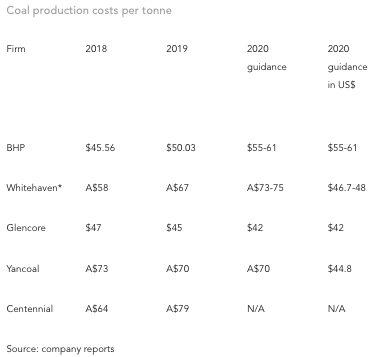
Case Study 2: Cockal BBM Metallurgical Coal Mine, Indonesia (2021):
- Operating Cost FOB: Coking coal = US$107.5 per metric ton
Case Study 3: Operating Cost Breakdown

Case Study 4: Anglo American Met Coal (2020):
- Sales: 16.9 million metric tons
- Price: $106 per metric ton
- FOB Cost: $103 per metric ton (Unit cost $86/ton + royalty $10/ton + $7 other costs)
- Margin: $3 per metric ton
6.3 Price and Revenue
• Coking Coal FOB Price (Life of Mine - LOM): US$170 per metric ton
• Revenue: 10 million metric tons per annum X US$170 per metric ton
= US$1.7 billion per year
- Coking Coal FOB Price (Life of Mine – LOM): US$170 per metric ton
- Revenue: 10 million metric tons per annum X US$170 per metric ton = US$1.7 billion per year
Case study 1: Metallurgical coal price indices
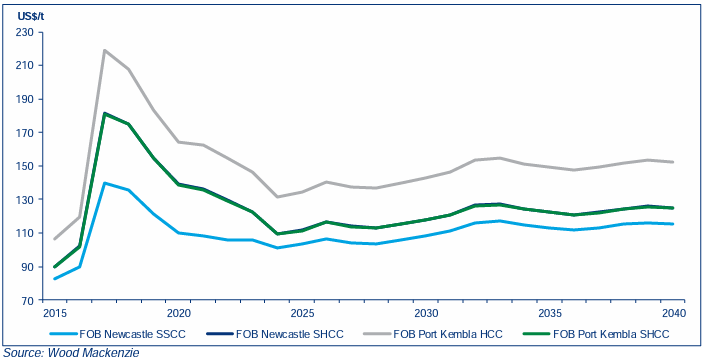
Case Study 2: Australia Newcastle Benchmark in 2018:
- Premium Hard Coking Coal Spot Price averaged US$206 per metric ton in 2018.
Case Study 3: Australia Coal Prices
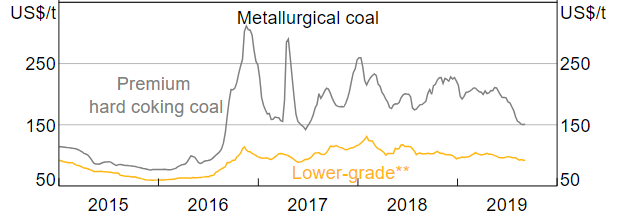
Source: RBA. Cunningham et al., 2019
Case Study 4: Australia 2021 Metallurgy Coal Prices Surged to Over US$400 per metric ton FOB

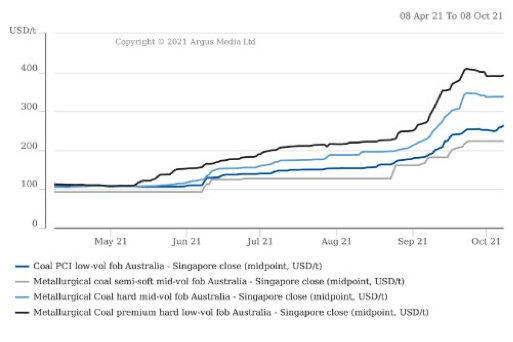
Case Study 5: USA
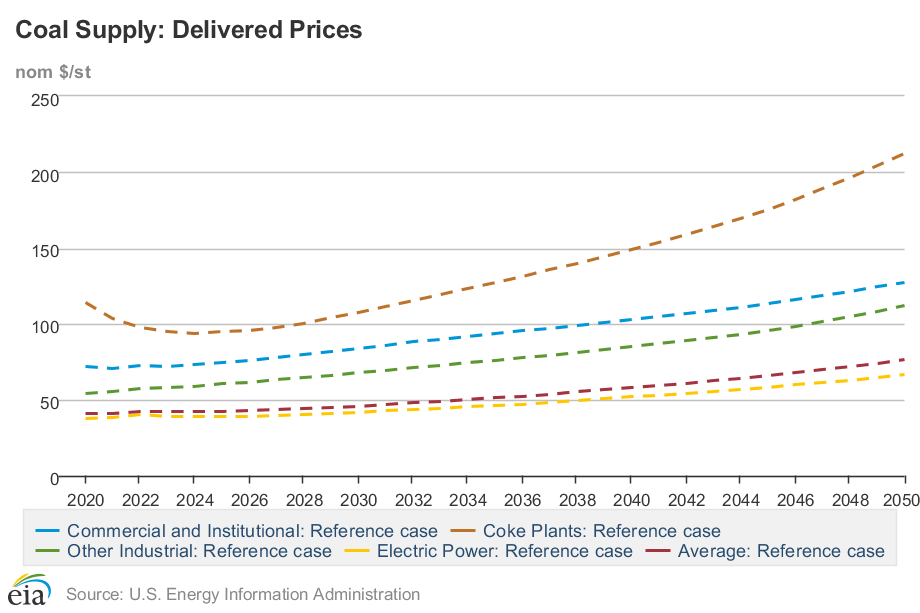
6.4 Financial Returns

Case Study:
- IRR: Two projects showed 20%-36%
- Payback: 2-4 years from the start of production (depending on demand and prices of metallurgical coals).
- Downside: Overextended Capex investment and downtown coal prices can exert a negative impact on profit margin.
2019 Financial Income of listed international coal mining groups
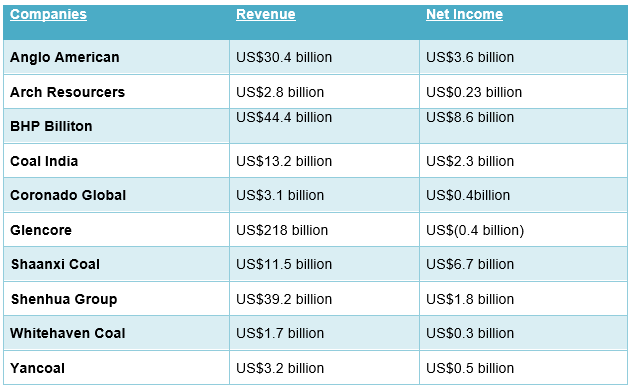
2019 Local Group

6.5 Source of Funding
- Strategic Investors:
- New Investor: A project leader with a focus on business and financial management.
- Financier: Private equity firms and investor groups specializing in metallurgical coal mining.
- Met Coal Mine Operator: International and local metallurgical coal mine developers and operators.
- Target Market: Metallurgical coal traders and top steelmakers from China, India, Japan, South Korea, and the European Union.
2. Private Equities and Investors
- 2Invest
- Acadian Asset Management
- Aditya Birla Sun Life AMC
- Adaro Strategic Capital
- AFP Capital
- AMCI
- Azvalor Asset Management
- Bankinter Gestión de Activos
- Baring Private Equity
- Berkshire Hathaway
- BlackRock
- BMO Capital Markets
- Capstone Partners
- Coronation Fund Managers
- Causeway Capital Management
- Charles Schwab Investment Management
- China Cinda Asset Management
- CIBC Capital Markets
- Citigroup
- Global X Management
- Contrarian Capital Management
- Crocodile Capital Partners
- Da Cheng Fund Management
- Delphi Unternehmensberatung
- Denham Capital
- Deutsche Balaton
- Dimensional Fund Advisors
- E Fund Management
- Eastspring Investments
- Eaton Vance Management
- Emirates Investments Group
- EMR Capital
- Epoch Two Investment Holdings
- Erdenes Mongol
- Essence Fund
- Evercharm International Investment
- First Trust Advisors
- Fort Capital Partners
- Franklin Resources
- Fullgoal Fund Management
- Geode Capital Holdings
- GF Fund Management
- GIC
- Gilder Gagnon Howe & Co
- Global Natural Resources Fund
- Golden Energy and Resources
- Goldman Sachs
- Greenstone Resources
- G-Resources Group
- Harris Associates
- HDFC Asset Management
- Highland Strategic Holding
- HSBC
- IBK Capital
- ICICI Prudential Asset Management
- ING Capital
- Invesco Great Wall Fund Management
- IronHorse Capital
- JA Ashton
- Japan Government Pension Investment Fund (GPIF)
- JPMorgan Chase
- L1 Capital
- Lazard Asset Management
- Legal & General Investment Management
- Life Insurance Corporation of India
- Lion Global Investors
- Lucion International Financial
- Macquarie
- Mayr Investment Managers
- McKinley Capital Management
- Mitsubishi UFJ Financial
- Moelis & Company
- Monarch Alternative Capital
- Morgan Stanley
- Murdock Capital
- Nationwide Fund Advisors
- Nippon Life India Asset Management
- Nomura
- Northcott Capital
- Northern Australia Infrastructure Facility (NAIF)
- Northern Trust Investments
- Northstar Tambang Persada
- Norway Government Pension Fund Global
- OppenheimerFunds
- Orient Securities Asset Management
- Origin Asset Management
- Orion Resource Partners
- Pacific Road Capital
- PCF Capital
- Petra Capital
- Pembroke Resources
- Prudential Financial
- Quantex
- Qatar Holding
- Regal Funds Management
- Resource Capital Funds
- RFC Ambrian
- RhumbLine Advisers
- Robeco Institutional Asset Management
- ROC Global
- Rothschild & Co
- Royalty Stream Investments
- Sev.en Global Investments
- South Korea National Pension Service
- SBI Funds Management
- Schroder Investment Management
- Segall Bryant & Hamill
- Sprott
- State Street
- Sumitomo Mitsui Trust
- Sun Life Financial
- Tarl Investment Holdings
- Taurus Funds
- TD Securities
- Teachers Advisors
- Tembo Capital
- TIAA-CREF Investment Management
- TPG
- T. Rowe Price
- Vanguard
- Van Eck
- Wells Fargo
- Wellington Management
- William Blair Investment Management
- Yuanta Securities Investment Trust
3. Consultants, development, procurement and fund managers to the coal mining industry
- Capitalistic Man
- Duff & Phelps
- Ernst & Young
- IFC (International Finance Corporation)
- German Mineral Resources Agency (DERA)
- Indonesian Coal Mining Association (APBI-ICMA)
- Indonesia Ministry of Energy and Mineral Resources (MEMR)
- KPMG
- M. Klein & Company
- McKinsey & Company
- Natural Resources Global
- Preqin
- PwC (PricewaterhouseCoopers)
- Revaluate
- SRK Consulting
- Trafigura Group
- Wood Mackenzie
- World Coal Association
6.6 The Big Picture
Cryptocurrency Funding in Mining:
- Emerging trend in mining industry.
- Cryptocurrencies used as alternate funding.
- Crypto tokens’ value tied to mineral deposit or production.
- Token transactions conducted via blockchain technology.
- Trading occurs on third-party platforms.
USA Investments:
- Major players: BlackRock with US$84 billion, Vanguard with US$86 billion invested in coal assets.
Bank Loans to Coal Industry (2020-2021):
- 381 commercial banks involved.
- Total loans to coal industry amounted to $315 billion.
- Top lenders:
- Mizuho with US$22 billion.
- Sumitomo Mitsui Bank with US$21 billion.
- Mitsubishi Financial with US$18 billion.
- Citigroup with US$13.5 billion.
- Barclays with US$13.4 billion.
Underwriters:
- Industrial and Commercial Bank of China with US$37 billion.
- CITIC with US$32 billion.
- Shanghai Pudong Development Bank with US$28 billion.
- Bank of China with US$24 billion.
- China Everbright Group with US$23.7 billion.
Source: Reclaim Finance Org. Satow et al., 2021
7.0 Management Team
7.1 Key Management Team
- Mentors: Visionary industry leaders with vast global networks, offering invaluable guidance and inspiration.
- Coaches: Mission-focused industry experts providing practical solutions to keep the team on track.
- Partners:
- A project leadership group with a proven track record in the development, operation, and financial management of metallurgical coal mining ventures.
- A reputable investment management firm with access to funding sources within the metallurgical coal mining sector.
- Government agencies offering financial incentives and robust business support.
- A credible local metallurgical coal mine developer with procurement capabilities, a local network, strong financial standing, and solid government backing.
- Target market end-users, including coal traders and steelmakers.
In the coal mining industry, several global leaders have made significant contributions, shaping its growth and success. Here is a list of some of these remarkable individuals, honoured for their vision and dedication:
- Ian Cockerill
- David Delbridge
- Mark Gray
- Owen Hegarty
- Dr Norman B. Keevil
- Professor Mark Noppé
- Dr Victor Rudenno
- Garibaldi Thohir
- Barry Tudor
- Yang Zhaoqian
These are just a few of the outstanding professionals and captains of the industry. The readers are encouraged to explore further and conduct their research to learn more about the management teams in this dynamic field.
Coal miners:

Wikimedia J. Collier 1942

Read 01. 2018 /ccoalnews
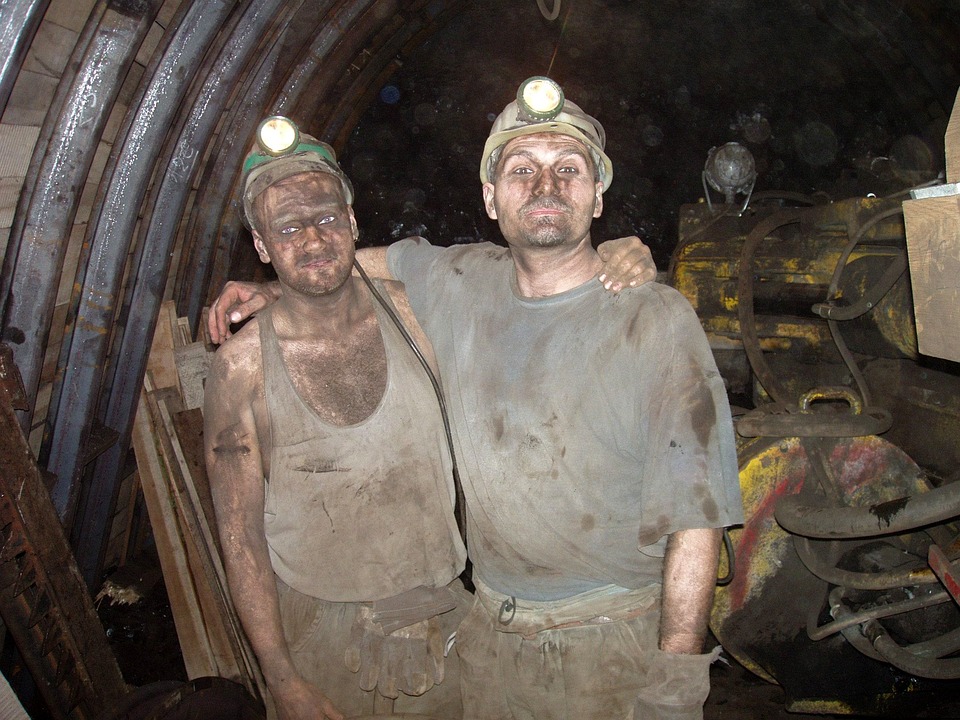
MPI. Dan Hatch 2017
7.2 Key Management Team Model
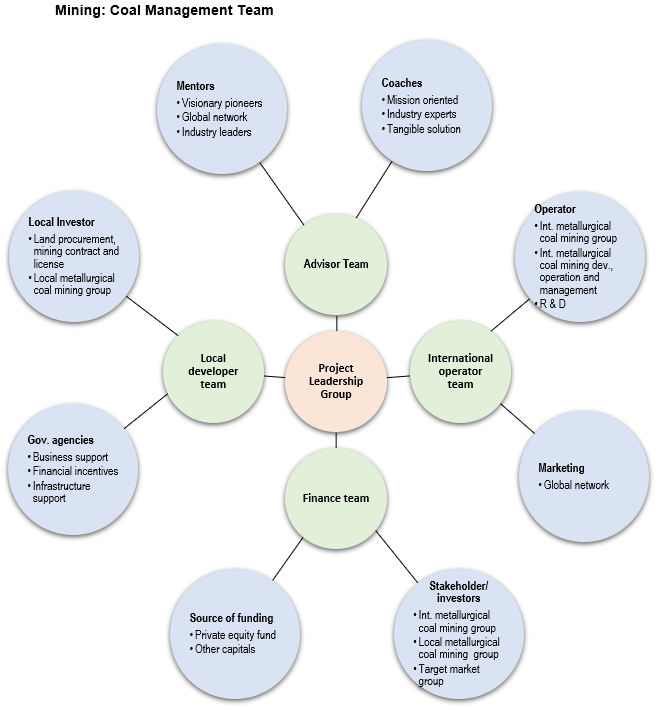
8.0 Unique Business Model
8.1 Team with Successful Track Record:
- The team includes international and local metallurgical coal operators.
- It also consists of financial service providers, investors, government agencies, and coal mine developers.
8.2 Entry Models: Options for the entry models include:
Field:
- Greenfields: Explore for mineral deposits in new areas and build new facilities from scratch.
- Brownfields: Buy or lease an existing facility and start production immediately.
- Hybrid: Foreign investors can buy into an existing coal mining group, capture existing mining rights and operations, expand the exploration process, and acquire long-term mining rights.
Production:
- Buy or lease new equipment.
- Outsource operations to mining operators.
8.3 Unique business model
- Team: Comprised of a top international management team with successful track records.
- Partner: Combines the unique strengths of stakeholders and investors into a single entity.
- Finance: Backed by solid financial support.
- Demand: Establishes strategic partnerships with target customers to secure demand.
- Location: Beneficially located near international ship traffic lanes with seaports in Borneo.
- Ores: Focuses on metallurgical coals in strong demand by the steel industry.
9.0 Key Success Factors & Risk Mitigation
9.1 Key Success Factors
- Need: Confirm the need and engage end-users as part of the investment team.
- Finance: Ensure financial viability by minimizing Capex investment and utilising an outsource model for production flexibility. Secure demand to enhance profitability.
- Feasible: Execute the plan with confidence, leveraging the successful track record of the team.
9.2 Risk
- License: License to operate is a primary concern for investors.
- Cost: Maintain productivity, optimize operations, and stay competitive in production costs.
- Policy: Address unclear rules and regulations related to exploration, foreign investment, mining exports, and fiscal incentives.
- Prices: Mitigate risks associated with volatile global coal prices.
- Revenue: Ensure project cash flow is adequate.
- Political: Address political risks that could lead to permit cancellations.
9.3 Risk mitigation
- Rules: Work with the government to establish favourable license requirements for foreign mining groups.
- Incentive: Encourage the government to provide fiscal and business incentives to attract foreign companies, bringing in advanced mining equipment, technology, and management expertise.
- Explore: Promote exploration incentives programs to encourage foreign mining groups to participate in exploration efforts.
- Support: Establish laws and regulations that encourage and support the mining business to attract new investment.
- Prices: Involve end-users in coal pricing decisions to set perimeter rates and mitigate global price fluctuations.
10. Exit Strategy:
10.1 Forms of Exit:
- Consider options like IPO, buy-out, M&A, and transfer for the exit strategy.
10.2 Key Attractions for New Investors:
- Portfolio: Metallurgical coal mine projects offer an opportunity for alternate investment in an emerging market.
- Demand: Metallurgical coals serve essential roles with limited competitors in the steel industry.
- Barrier: High barriers to entry due to the substantial cost of investment.
- Cost: Potential for cost consolidation through the acquisition of metallurgical coal mine projects.
- Growth: Opportunities for capturing growth in an emerging market.
- ESG: Emphasis on responsible corporate ESG (Environmental, Social, and Governance) practices, aligning with purpose-driven investment.